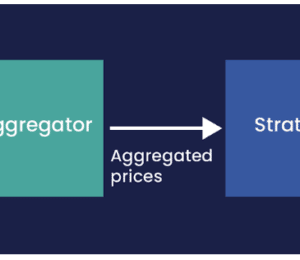Did You Know You Can Create Mappers Without Creating Underlying Objects in Java?
- September 20, 2022
- 5879 Unique Views
- 4 min read
As most Java developers know, putting values in a Java Map (like a HashMap) involves creating a large number of auxiliary objects under the covers.
For example, a HashMap with int keys and long values might, for each entry, create a wrapped Integer, a wrapped Long object and a Node that holds the former values together with a hash value and a link to other potential Node objects sharing the same hash bucket.
Perhaps even more tantalizing is that a wrapped Integer might be created each time the Map is queried. For example, using the Map::get operation.
In this short tutorial, we will devise a way of creating an object-creation-free, light-weighted mapper with rudimentary lookup capability that is suitable for a limited number of associations.
The mapper is first created and initialized, whereafter it can be queried. Interestingly, these mappers can also be serialized/deserialized and sent over the wire using Chronicle’s open-source libraries without incurring additional object creation.
Setting the Scene
Suppose we have a number of Security objects with an “id” field of type int. We would like to create a reusable mapper for these objects allowing a number of Security objects to be looked up using the “id” field:
public final class Security extends SelfDescribingMarshallable {
private int id;
private long averagePrice;
private long count;
public Security(int id, long price, long count) {
this.id = id;
this.averagePrice = price;
this.count = count;
}
// Getters, setters and toString() not shown for brevity
}
The SelfDescribingMarshallable is basically a serialization marker.
Implementing an IntMapper
We can now store these Security objects in an IntMapper containing the actual lookup method as shown hereunder:
public class IntMapper<V> extends SelfDescribingMarshallable {
private final List<V> values = new ArrayList<>();
private final ToIntFunction<? super V> extractor;
public IntMapper(final ToIntFunction<? super V> extractor) {
this.extractor = Objects.requireNonNull(extractor);
}
public List<V> values() { return values; }
public IntStream keys() {
return values.stream().mapToInt(extractor);
}
public void set(Collection<? extends V> values) {
this.values.clear();
this.values.addAll(values);
// Sort the list in id order
this.values.sort(comparingInt(extractor));
}
public V get(int key) {
int index = binarySearch(key);
if (index >= 0)
return values.get(index);
else
return null;
}
// binarySearch() shown later in the article
}
That’s it!
We have created a reusable mapper with no object creation overhead with reasonable query performance.
Using the Mapper
Armed with the above classes, we can put together a small main method that demonstrates the use of the concept:
public class SecurityLookup {
public static void main(String[] args) {
// These can be reused
final Security s0 = new Security(100, 45, 2);
final Security s1 = new Security(10, 100, 42);
final Security s2 = new Security(20, 200, 13);
// This can be reused
final List<Security> securities = new ArrayList<>();
securities.add(s0);
securities.add(s1);
securities.add(s2);
// Reusable Mapper
IntMapper<Security> mapper =
new IntMapper<>(Security::getId);
mapper.set(securities);
Security security100 = mapper.get(100);
System.out.println("security100 = " + security100);
}
}
As expected, the program will produce the following output when run:
security100 = Security{id=100, averagePrice=45, count=2}
Binary Search Method Implementation
The binary search method used above might be implemented like this:
int binarySearch(final int key) {
int low = 0;
int high = values.size() - 1;
while (low >> 1;
final V midVal = values.get(mid);
int cmp = Integer.compare(
extractor.applyAsInt(midVal), key);
if (cmp 0)
high = mid - 1;
else
return mid;
}
return -(low + 1);
}
}
Unfortunately, we cannot use Arrays::binarySearch or Collections::binarySearch. One reason is that methods like these would create additional objects upon querying.
Other Key Types
If we want to use other types like CharSequence or other reference objects, there is an overload of the comparing() method that takes a custom comparator. This might look like the following in the case of CharSequence:
values.sort(
comparing(Security::getId, CharSequenceComparator.INSTANCE));
More generally, if the key reference object is of type K, then the binary search method above can easily be modified to use an extractor of type Function instead and an added Comparator parameter.
A complete example of a generic Mapper is available here.
Serializing Across the Wire
Sending IntMapper objects over the wire without object creation requires special care on the receiver side so that old Security objects can be reused. This involves setting up a transient buffer that holds recycled Security objects.
private final transient List buffer = new ArrayList();
We also have to override the IntMapper::readMarshallable method and include:
wire.read("values").sequence(values, buffer, Security::new);
The complete setup is outside the scope of this article.
Analysis: HashMap vs. IntMapper
Looking at various properties of the two alternatives, we see the following:
Execution Performance

(*) Depending on key distribution, size, load factor and associations made.
(**) There is no add method in the IntMapper, instead all values are added in a batch
Memory usage in Bytes

(***): The figures above are under typical JVM use, excluding the Security objects themselves and excluding any backing array, both of which can be recycled between use.
Object Allocation in objects

All the figures above are excluding the Security objects themselves and excluding any backing array.
Resources
- Chronicle Software Home Page
- Chronicle Wire on GitHub (open-source)
- Complete source code for all examples in this article (open-source)
Don’t Forget to Share This Post!







Comments (1)
david
3 years agothx very much for your code. "(***): The figures above are excluding the Security objects themselves and excluding any backing array" how to create a simple map/list/array of Security objects which are directly allocated off heap? each time we do: final Security s0 = new Security(100, 45, 2); final List securities = new ArrayList(); securities.add(s0); we create s0 on the heap !?